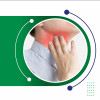
 IJCP Editorial Team
IJCP Editorial Team
The Topical Effect of Povidone-Iodine for the Repair of Oral Wounds
The oral mucosa is subject to constant physical and chemical insults, resulting in the development of ulcerated lesions that are prone to infection, potentially hindering the healing process.
This study conducted an extensive review of both medical and dental literature to explore the application of povidone-iodine in the treatment of oral wounds. The findings revealed that povidone-iodine can effectively control local infection in a concentration-dependent manner, positively influencing the tissue repair process. Consequently, oral antiseptics emerge as a favorable option for managing oral lesions, offering the advantage of minimal risk associated with systemic toxicity and allergies, along with limited clinical evidence of bacterial resistance.
Source: da SilveiraTeixeira D, de Figueiredo MAZ, Cherubini K, de Oliveira SD, Salum FG. The topical effect of chlorhexidine and povidone-iodine in the repair of oral wounds. A review. Stomatologija. 2019;21(2):35-41. PMID: 32108654.

IJCP Editorial Team
Comprising seasoned professionals and experts from the medical field, the IJCP editorial team is dedicated to delivering timely and accurate content and thriving to provide attention-grabbing information for the readers. What sets them apart are their diverse expertise, spanning academia, research, and clinical practice, and their dedication to upholding the highest standards of quality and integrity. With a wealth of experience and a commitment to excellence, the IJCP editorial team strives to provide valuable perspectives, the latest trends, and in-depth analyses across various medical domains, all in a way that keeps you interested and engaged.














Please login to comment on this article